Lee Rose – Balancing Light and Working with Something He Loves
Posted on October 1, 2014You don’t reach the top of the lighting design profession without talent; and you don’t keep your work fresh and vibrant through four decades of changing technology and fashion without passion. Lee Rose possesses both in ample quantities.
Starting in the 1970s as a lighting technician and designer for rock bands, Rose spent about ten years touring, before establishing himself as one of the world’s premier LDs for film and television. Twice nominated for Emmy Awards, his designs have illuminated some of the most iconic TV programs like Dick Clark’s New Year’s Rockin’ Eve, The Golden Globe Awards, The Jerry Lewis MDA Telethon, Larry King Live and, most recently, Chelsea Lately, as well as hit films like Vanilla Sky and Almost Famous.
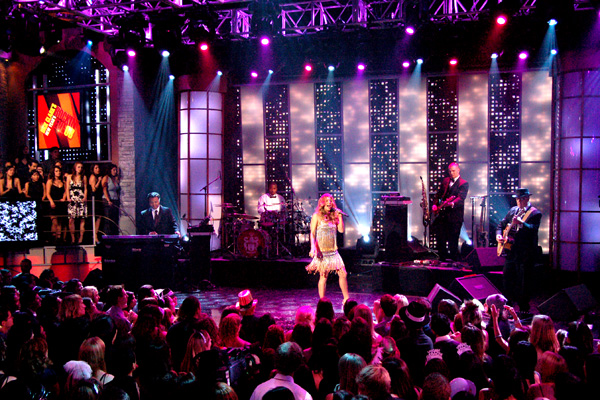
A partner in Los Angeles-based Design Partners, Rose talked to us about some of the highlights of his career, his ideas on lighting design and his reasons for giving back to the profession through his many mentoring activities. Rose says he considers himself lucky to have found lighting design; we believe that in this case “luck” is a two-way street. Enjoy!
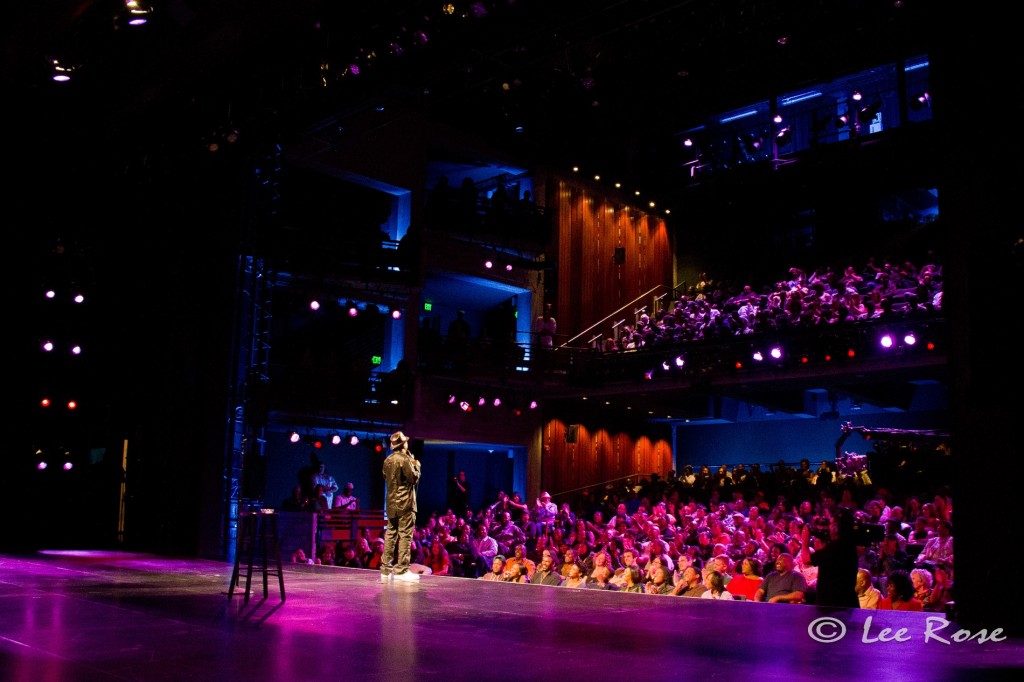
You’ve been involved in quite a few educational seminars, why is that?
“People in my past made it a point to take the time to pass on what they knew to me. I’ve always made it a priority to try to pass on what I’ve learned to those people coming up who have a true desire to learn and grow in our business.”
What’s the biggest challenge in explaining design concepts to students?
“The challenge comes in explaining concepts that are based on experiences that the students may not yet have.”
Suppose someone was so brand new that they didn’t really know what a lighting designer did; how would you explain your profession to that person?
“A lighting designer is a combination of an artist, an engineer, a politician, an educator and a salesman that uses light and visual imagery to convey the essence of the story, the music or the dance that they are lighting.”
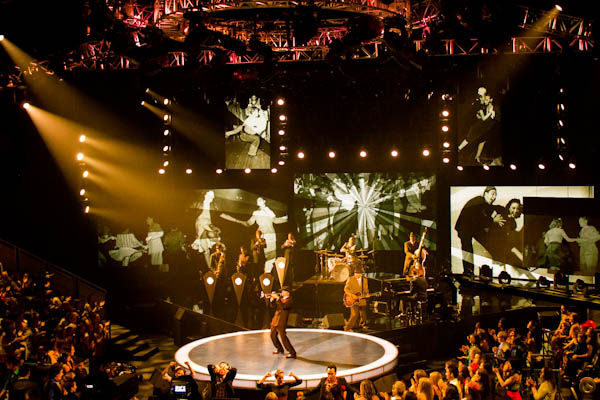
On the subject of the LD’s role, it seems like it’s been changing quite a bit with the advent of LED video screens, pixel mapping and other new technologies. So now the LD seems to be acting almost as a set designer. Do you agree? If so how has this changed the way you approach your work?
“In my case it has gone back and forth. On some projects the screen content is handled by another department completely, although we still have to collaborate in order to insure a unified execution of the underlying concept. On other shows the screens’ content falls to me and I will bring in other artists and technologists to both collaborate on the concepts and to execute the designs.”
On a related topic, some designers feel video panels are part of a light show, while others see them as a separate entity. Where do you fall on that continuum?
“My feeling is that if the pixel displays are hi-res enough to render images it’s ‘screens,’ but that any pixel mappable display that is too low-res to really render photorealistic content is lighting. I wouldn’t classify product with resolutions of 25mm or more, viewed at TV show/arena distances, to be ‘screens.’”
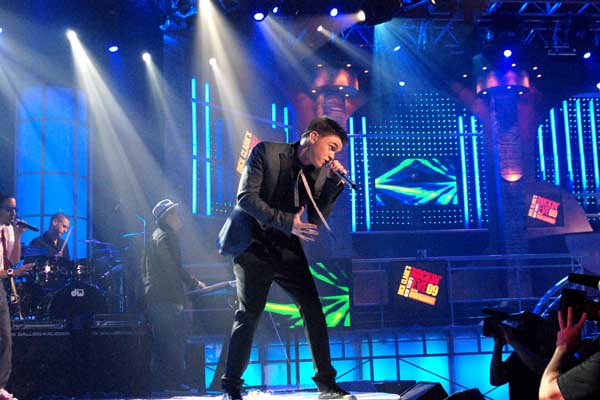
Looking at your own work on TV, you do a wonderful job lighting the entire set. This is quite different than it was years ago when designers seemed more prone to light specific elements of a set like a chair or counter. Does this affect the way you design?
“No – as a lighting designer working mostly in multi-camera, recorded mediums, such as film, tape and digital, my two key responsibilities are to add an apparent third dimension to an inherently two dimensional medium and insure that no matter where the cameras may go they have the best possible images comprising a foreground, mid-ground and background.
“This requires prioritizing the lighting budget and design to apply the proper fixtures to the proper locations in a descending priority based on my experience of how a project will be recorded. The ‘hero’s’ key, filland backlight as well as the background for the close ups will usually be the most used, followed by mid-sized shots and cross shots. Wide shots and reverse shots will usually end up on screen somewhat less, but the wide shot will be a shot that conveys a great sense of the overall lighting design.”
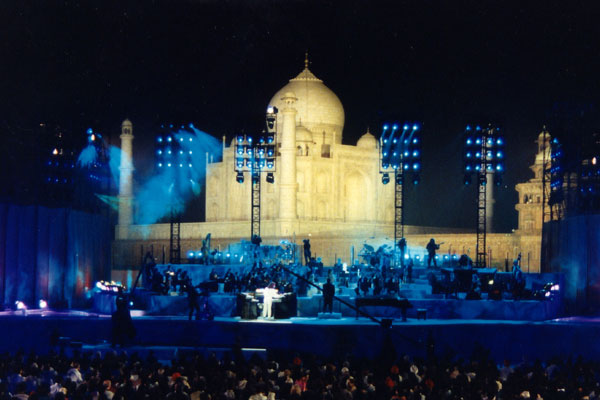
We also see that you like to surround video screens with various structural lighting panels. Can you talk about why you do this?
“Video screen will usually take up a significant portion of the background in many of the close-up and mid shots, so to me it is important to try to fill the edges of those shots and to define the space where the interface between lighting and screens exists. I specifically love the way we can now use fixtures to pixel map the video elements and extend the ‘feel’ of the content into the lighting elements.”
Given that you’ve done so much broadcast work, can you tell us how it’s changed, particularly in regards to HD?
“I don’t think that HD has changed the number of camera angles or how I look at the 360° nature of video lighting design. What HD has done has changed the aspect ratio of the designs. The difference between the 4:3 standard definition aspect ratio and the 16:9 HD aspect ratio means that the top of the 4:3 frame is cut off in 16:9. That caused me to lower trim heights and to widen the width of the lighting to keep it in frame as a background.”
You’re known for your creative use of colors. It seems like the advance of LED color blending, the addition of amber and better whites has opened a lot of new creative possibilities for designers. Has this impacted your work?
“Color is color no matter what technology you use to create it. That being said, it’s much easier to get a full stage wash of a true deep blue with LED technology than even HID fixtures with dichroic colors and much, much easier than a fleet of tungsten halogen fixtures with some dark blue gel in them.
“I have been pleased with the continuation of the extension of the original RGB LED technology with the addition of amber & whites. Some fixtures are now even using up to 7 different LED junctions on their chips to extend the gamut of the color that is possible to produce.
“The one thing that still needs to be considered is the discontinuous nature of solid state lighting. Producing white with RGB doesn’t render colors the same way as a tungsten or HID lamp. Even the addition of white and amber LEDs still doesn’t produce the same continuous spectral distribution of true tungsten or daylight. Even different white LED fixtures, in my experience, render skin tones slightly differently.”
You’ve had a very long run with the New Year’s Rockin’ Eve, yet every year it looks fresh. So, how do you keep the creative juices flowing?
“That show tends to have a similar set for a few years in a row. The downside is it’s sometimes difficult to ‘reinvent the wheel,’ but the upside is that I can ‘tweak’ things year to year. It’s also great that the show usually has a fairly wide variety of music styles and that always makes it easier to ‘stretch’ the creative chops.”
Speaking of that – what’s the big challenge when you design something like New Year’sRockin’ Eve with so many different performers and productions on one set with only two stages?
“A show like NYRE may have 22 performances to light. That screams for automated fixtures to keep all those performances interesting. Also, for years we used standard Fresnels for key lights on stage. Slowly we replaced them all with automated framing fixtures. One of my two console programmers has all the key lights and can refocus them for each performer allowing for more flexibility with less fixtures and also for ‘on the fly’ changes to be accommodated on set. Cause as you know –nothing ever changes at the last minute in production — Right?”
How is designing TV musical performances different from designing for a touring concert?
“Touring lighting design is mostly about the wide shot/audience view. You design and light for what you see sitting at the console in the back of the house. That is not to say that IMAG screens, and 360° arena seating doesn’t come in to play for a touring designer; it’s just that between the two, TV may have 5-15% of the shows as ‘wide shots,’ where most of the live audience is seeing 100% wide shot, other than screens.”
Suppose you get a new project; where does the Lee Rose creative process start? Is there a part of the design that you always begin with?
“Any new project starts with the overall concept of the production. Is it live, TV, single camera, multi-camera? Is it music, dramatic, game show, bar mitzvah? (Just kidding) Who is the talent? What do they look like? How do they take light? Then it comes to the venue? What is it? What are the advantages/limits? Then I look at the production design. I usually start a project with the close-up positions as they tend to be the most seen in a TV production. How many? Shot from where? What will the background be? From there I work outwards to the mid shots, wide shots, audience shots and reverse shots. I try to cover the foreground, mid-ground and background of each. I also try to use the budget most effectively.”
What was it like to light the Acropolis for the Yanni PBS Special?
“It was actually the Herod Atticus Theater. It’s located down the hill from the Acropolis. The actual Acropolis was lit. We just had to have a crew clean the lenses on all their lighting to actually get any level out of their lights. The Herod Atticus was tricky to light as we had to have every lighting position approved by the Greek Ministry of Antiquities. They were quite specific that we not physically attach anything to the venue. We use screw jacks in the onstage windows and built a cantilever scaffold to go over the theater walls without touching them. The audience was mostly lit from scaffold towers at the top level of the audience. Still I was very pleased with the overall look of that show.”
Looking back over your career, are there any projects or experiences that really stand out as special for one reason or another?
“I’ll always be proud of being part of the team that lit the Taj Mahal for the first time in history for the Yanni: Tribute PBS special from the Taj Mahal and Forbidden City. That project alone is hours of insane stories. The one thing I remember is at the end of the first night that we lit the Taj, we wrapped programming as the sun came up and took the van back to our hotel. As we walked into the lobby, there was a sign up at the gift shop ‘NEW: Illuminated Taj Mahal postcards.’ Apparently when the lights came on, the enterprising Indians got out there, shot the Taj, and printed up postcards before daylight and had them in the shops by the next morning. Crazy.”
Anything you’d like to add?
“Just to say that I’m extremely grateful for the opportunity of working at something that I truly love for the past 40-plus years. That it wouldn’t be a career without the mentoring and assistance I got early on, the friendships and relationships that I have had the privilege of having and the collaborations with a slew of directors, producers, production designers, lighting directors, programmers, gaffers and crew people. Lighting design starts with the blank screen (or back in my day, the pencil and blank paper), but in the end none of those shows would happen without the contributions of all the other people involved.”